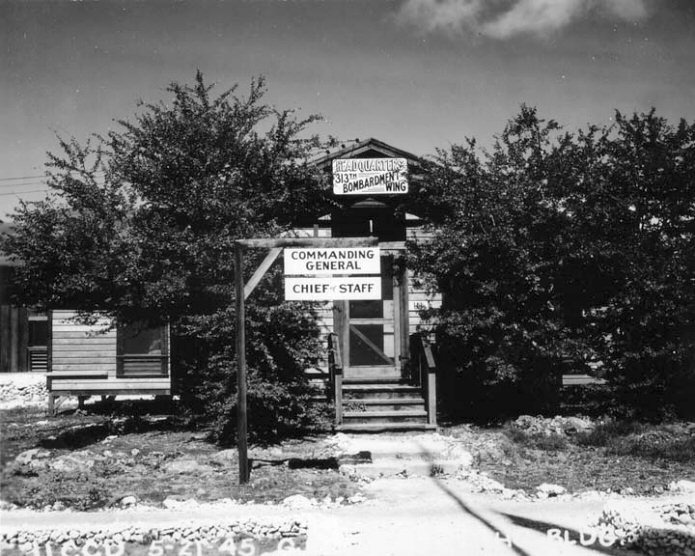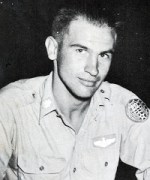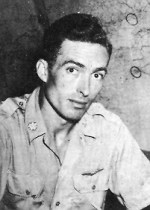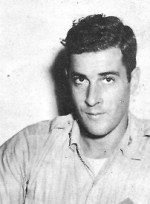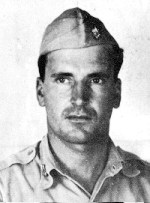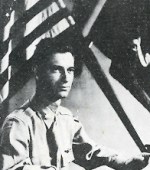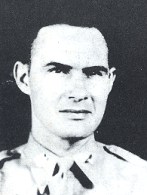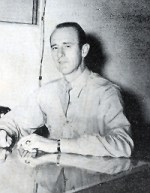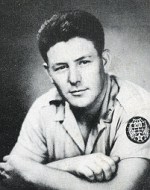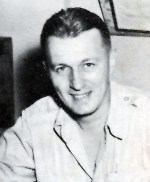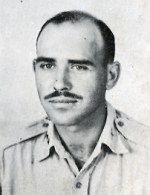

Colonel Kenneth H. Gibson, Commanding Officer (1944-1945)
The 6th Bomb Group was part of the 313th Bombardment Wing of the 21st Bomber Command of the 20th Air Force. The 20th Air Force was the first Air Force not put under the command of a Theater Commander, such as Eisenhower, McArthur or Nimitz. Instead General Curtis LeMay assumed direct command of the 20th Air Force. The mission of the 20th was to engage in the strategic destruction of Japan by air.
The 20th Air Force was originally intended to include several Bomber Commands, based in several locations: the 20th (based in India), the 21st (based in the Marianas), the 22nd (based in the Philippines or Formosa) and the 23rd (based in the Aleutians). 1 The Marianas proved to be the best location. The 22nd and 23rd Bomber Commands were never activated. The 20th Bomber Command was activated in 1943 and included the 58th Bombardment Wing. However, operations out of China proved impractical since all supply was from the air. The 20th Bomber Command was eventually deactivated and all Bombardment Wings were assigned to the 21st Bomber Command.
The 21st Bomber Command included the 58th, 73rd, 313th, 314th and 315th Bombardment Wings. (For a full listing, see the Table at the bottom of this page). The 313th Bombardment Wing included the 6th, 9th, 504th, 505th Bomb Groups and, later, the 313th Composite Squadron (the "Atom Bombers"). The 6th Bomb Group included the 24th, 39th and 40th Bombing Squadrons. The 313th Bombardment Wing also included several Service Groups (probably the 72nd, 77th, 358th and 359th Service Groups). The 6th Bomb Group also includes several Service Squadrons.
Footnote
1. General Curtis E. LeMay and Bill Yenne, "Superfortress: The B-29 and American Air Power" (1988), p. 57.
| 1944 | The Group Prepares for War: |
|---|---|
|
04/01/44 |
Activated as part of the 313th Bomb Wingof the XXI Bomber Command. The three squadrons were the 24th, 39th and 40th BombingSquadrons (Heavy). Stationed at Dalhart, Texas. Flying B-17s. |
|
05/23/44 |
Moved to Grand Island, Nebraska. |
|
06/03/44 |
The first B-29 arrives. |
|
07/01/44 |
Extensive flight training begins. |
| 1945 | The Group Goes to War: |
|---|---|
|
01/18/45 |
The B-29s land in Tinian. |
|
02/08/45 |
First large scale Mission |
|
03/09/45 |
Beginning of the "March Blitz" which results in 1st Distinguished Unit Citation. |
|
03/09/45 |
Beginning of aerial mining missions which result in 2nd Distinguished Unit Citation. |
|
08/14/45 |
Last Mission of the War. |

|
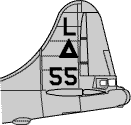
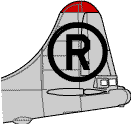 Early and late versions of tail markings |
|---|---|
The only decoration officially allowed was the Pirate insignia and a clever name. ["Pirate's Log", p. 70] |
|
|
The Headquarters Staff was responsible for coordinating the completion of tasks necessary to accomplish the objectives assigned to the Group. This involved coordinating efforts both inside and outside the Group - cajoling, coercing, phoning, visiting, requisitioning and filling out endless reports and forms in triplicate.
Several members of the HQ staff are described in the Pirates Log:
|
|---|
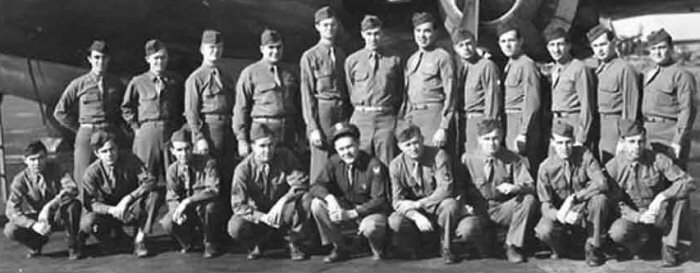
The 22nd Photo Lab. Pfc Eugene A. Lenschmidt is in the middle of the back row, arms behind his back. The C/O, 2/Lt George J. Ginosvky, is in the middle of the first row.
Service personnel were apparently assigned to the different squadrons. The 22nd Photo Lab was attached to the 6th Bomb Group. They are responsible for many of the fine pictures on this website.
In accordance with Air Force tradition, each squadron had an official insignia. The 39th and 40th squadron insignia were "borrowed" from the 3rd and 4th anti-submarine squadrons. The "Fighting Cock" was given a cigar - perhaps in deference to Gen. LeMay. |
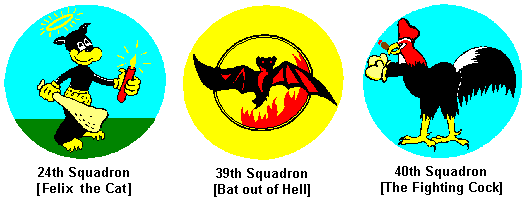
|
|---|
Each air crewman was typically assigned to a particular crew and plane and flew with that crew and plane for the duration. There were exceptions, of course. Some air crew might be asked to fill in a vacancy with another crew. If their aircraft was not available, an air crew might be assigned to fly a different aircraft for a mission.
Here is a tentative listing of all air crew personnel:
24th Squadron
39th Squadron
40th Squadron
Aircraft Ground CrewA small ground crew was assigned to each aircraft. Each ground crew was under the command of a crew chief (whose name might be painted on the side of the aircraft). The tasks of the ground crew were to perform routine maintenance on the aircraft, to patch up minor battle damage and to hunt for gremlins hiding in aircraft systems.
Squadron Service Personnel
Each squadron included support personnel assigned to particular specialties. These included aircraft refuelers and armorers, radio and radar technicians, and cooks and chaplains.
Here is a tentative list of all squadron ground personnel:
24th Squadron
39th Squadron
40th Squadron
Each Bomb Group was supported by an Air Service Group (ASG), which handled the big repair and maintenance jobs. Each ASG included a Headquarters and Base Services Unit (HQ), an Air Engineering Squadron (AE) and an Air Material Squadron (AM).
The 6th Bomb Group was supported by the 72nd ASG, which included the 535th AE and the 579th AM. They were located on the northeast corner of North Field. Most of the personnel in the ASG were formerly members the 6th BG. They were assigned to the ASG in an effort to centralize the maintenance function.
The 72nd ASG included the following units:
Headquarters and Base Services Unit
535th Air Engineering Squadron
579th Air Material Squadron
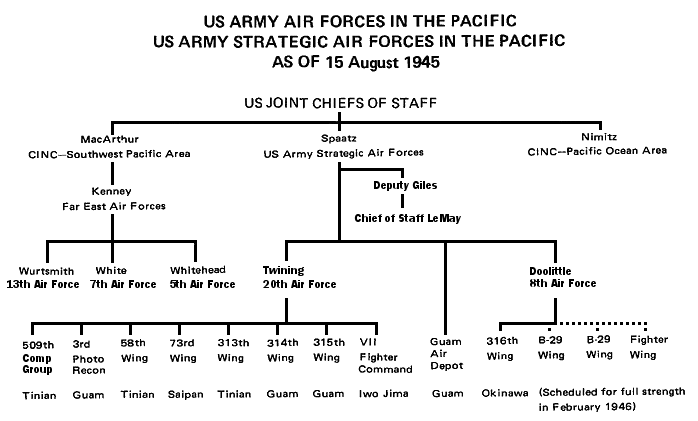
Other B-29 Groups and Wings were located on Tinian, Saipan and Guam. They were all part of the 21st Bomber Command of the 20th Air Force. (The 58th Bombardment Wing was originally part of the 20th Bomber Wing, which was deactivated in March 1945.)
| Bomb Wing | Bomb Group | Squadrons | Stationed at: | Tail Marking |
|---|---|---|---|---|
| 58th | 40th | 25th, 44th, 45th | Tinian, West Field | Triangle S |
| 444th | 676th, 677th, 678th | Tinian, West Field | Triangle N | |
| 462nd | 768th, 769th, 770th | Tinian, West Field | Triangle U | |
| 468th | 792nd, 793rd, 794th | Tinian, West Field | Triangle I | |
| 73rd | 497th | 869th, 870th, 871st | Saipan, Isley Field | A Square |
| 498th | 873rd, 874th, 875th | Saipan, Isley Field | T Square | |
| 499th | 877th, 878th, 879th | Saipan, Isley Field | V Square | |
| 500th | 881st, 882nd, 883rd | Saipan, Isley Field | Z Square | |
| 313th | 6th | 24th, 39th, 40th | Tinian, North Field | Circle R |
| 9th | 1st, 5th, 99th | Tinian, North Field | Circle X | |
| 504th | 398th, 421st, 680th | Tinian, North Field | Circle E | |
| 505th | 482nd, 483rd, 484th | Tinian, North Field | Circle W | |
|
--- |
509th | 393rd | Tinian, North Field | Circle Arrow |
| 314th | 19th | 28th, 30th, 93rd | Guam, North Field | Square M |
| 29th | 6th, 43rd, 52nd | Guam, North Field | Square O | |
| 39th | 60th, 61st, 62nd | Guam, North Field | Square P | |
| 330th | 457th, 458th, 459th | Guam, North Field | Square K | |
| 315th | 16th | 15th, 16th, 17th | Guam, West Field | Diamond B |
| 331st | 355th, 356th, 357th | Guam, West Field | Diamond L | |
| 501st | 21st, 41st, 485th | Guam, West Field | Diamond Y | |
| 502nd | 402nd, 411th, 430th | Guam, West Field | Diamond H | |
| Attached Units | ||||
| 3rd Photo Recon | ||||
| 4th Emergency Rescue | ||||
| 41st Photo Recon | ||||
| 55th Recon (LRW) | ||||
| ASG | Sorted by Bomb Wing |
Sorted by Bomb Group |
Squadrons: HQ = HQ and Base Services AE = Air Engineering AM = Air Material |
Stationed at: |
|---|---|---|---|---|
| 28th | 58th | 40th | HQ, 39th AE, 585th AM | Tinian, West Field |
| 25th | 58th | 444th | HQ, 35th AE, 578th AM | Tinian, West Field |
| 86th | 58th | 462nd | HQ, 349th AE, 584th AM | Tinian, West Field |
| 87th | 58th |
468th |
HQ, 355th AE, 589th AM | Tinian, West Field |
| 31st | 73rd | 497th | HQ, 5th AE, 574th AM | Saipan, Isley Field |
| 69th | 73rd | 498th | HQ, 305th AE, 575th AM | Saipan, Isley Field |
| 89th | 73rd | 499th | HQ, 502nd AE, 501st AM | Saipan, Isley Field |
| 90th | 73rd |
500th |
HQ, 508th AE, 507th AM | Saipan, Isley Field |
| 72nd | 313th | 6th | HQ, 535th AE, 579th AM | Tinian, North Field |
| 77th | 313th |
9th |
HQ, 534th AE, 576th AM | Tinian, North Field |
| 358th | 313th |
504th |
HQ, 568th AE, 567th AM | Tinian, North Field |
| 359th | 313th |
505th |
HQ, 570th AE, 569th AM | Tinian, North Field |
| 390th | 313th | 509th | HQ, 603rd AE, 1027th AM | Tinian, North Field |
| 31st | 314th | 19th | HQ, 56th AE, 574th AM | Guam, North Field |
| 69th | 314th | 29th | HQ, 305th AE, 575th AM | Guam, North Field |
| 89th | 314th | 39th | HQ, 502nd AE, 501st AM | Guam, North Field |
| 90th | 314th |
330th |
HQ, 508th AE, 507th AM | Guam, North Field |
| 24th | 315th | 16th | HQ, 551st AE, 552nd AM | Guam, West Field |
| 73rd | 315th | 331st | HQ, 586th AE, 580th AM | Guam, West Field |
| 75th | 315th | 501st | HQ, 587th AE, 581st AM | Guam, West Field |
| 76th | 315th |
502nd |
HQ, 588th AE, 582nd AM | Guam, West Field |
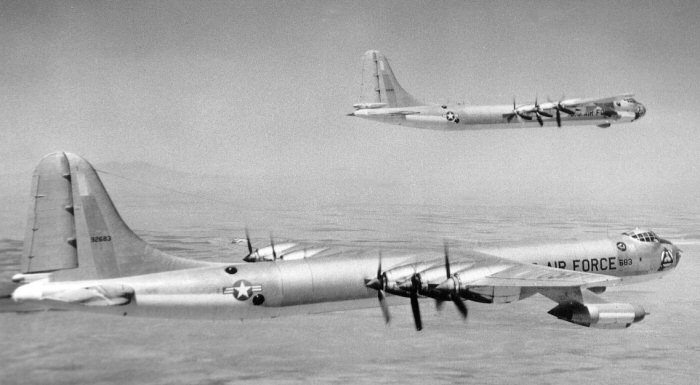
During the 1950s, the 6th Bomb Group continued to fly the largest Air Force bomber - the B36.
The 6BG is now the 6th Operations Group, stationed at MacDill AFB in Florida. The 24BS became the 24th Reconnaissance Squadron before being deactivated in 1994. The 39BS is now the 9th Special Operations Squadron stationed at Eglin AFB in Florida. The 40BS became the 40th Expeditionary Bomb Squadron and is on indeterminate status, probably stationed at Diego Garcia.
